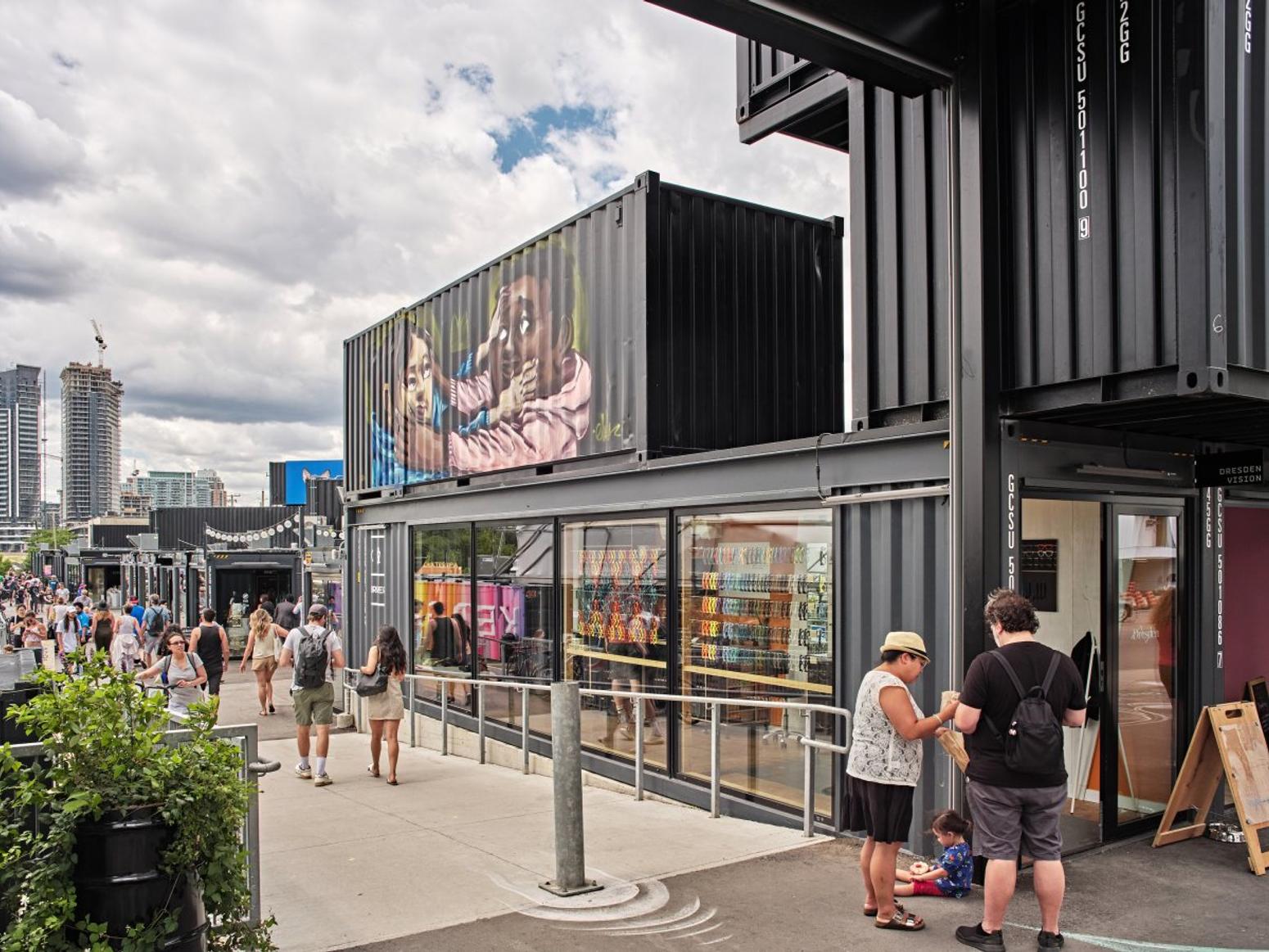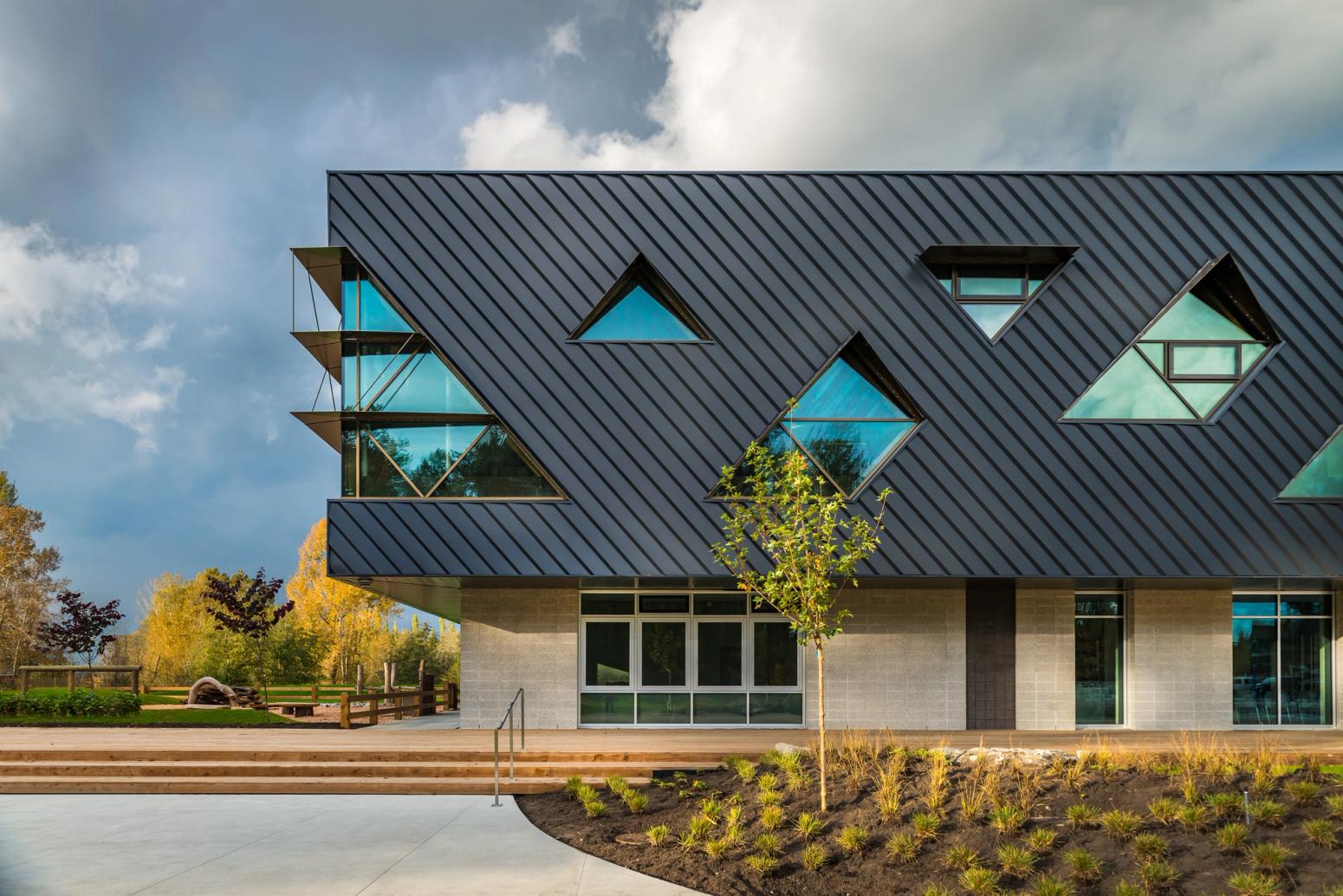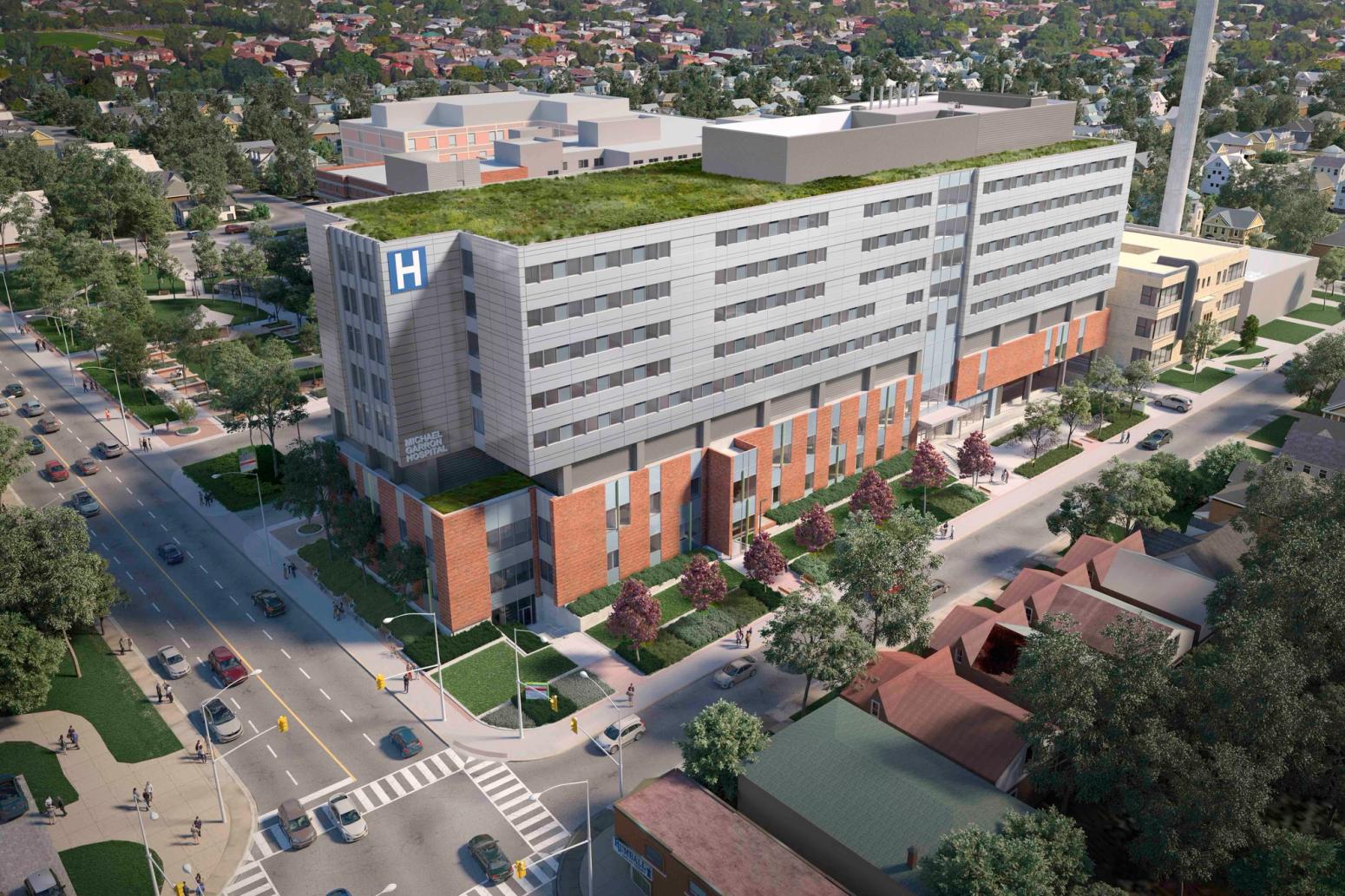Jun 27, 2020
Spotlight
Stackt Market Project
Location: Toronto, Ontario
Delivery Model: Project Management
Value: $7 milliion
Size: 100,000 sq. ft.
The Stackt Market was conceptualized to be a shipping container marketplace that utilizes undeveloped land in the city as a way to activate communities.
The project involved stacking and connecting re-purposed shipping containers to form a three-story outdoor marketplace. The ground-floor containers comprise shops and eateries, while the second and third-floor containers provide architectural massing features. The second-floor containers sit atop the ground-floor containers in a snake-like shape that architecturally connects the site’s east and west sides.
Additionally, there are three-story stacked containers on Bathurst Street, along with a tower feature entrance (an upended shipping container with another, horizontal container fully cantilevered on top) to further enhance the project’s presence in the community.
EllisDon’s Project Management Team coordinated every aspect of this project from preliminary design development through planning and approvals with the City and ultimately, construction work including relocation of the utilities, site services, and hard and soft landscaping and foundations for containers. The team also managed the cranage and installation of the shipping containers and the works associated with the final roofing of the containers prior to their fit-up by the tenants.
EllisDon began working on this project in December 2016 providing Project Management services. When we commenced work on the project there had been some test studies undertaken for
the layout of the containers; however, layouts were being completed in the absence of a program, and a
Site Plan Application to the City was required.
The project was without the following key elements:
- Functional Program;
- Project Schedule;
- Project Budget; and
- Consultant’s scope of work, fee proposal, contract, etc.
The project was in a state of ‘idea’ or ‘preliminary concept form’, with no path forward, project
parameters, or guidance in place to focus the team and client’s objectives. The client/developer had never managed any development work and had no experience in construction or development so EllisDon’s guidance throughout the entire project lifecycle process was imperative.
As a result of the lack of focus and forward movement of the project, along with the client’s shortage of
experience, EllisDon was pivotal in leading the project team and client forward to transition the Stack Market from an ‘idea’ to a ‘project’. Our leadership role and project management service were provided through the entire project lifecycle from Concept Development, to Functional Programming, Design, Authorities Approvals, Tendering, Construction, and coordination of all owner retail and programming elements.
EllisDon developed a comprehensive Project Schedule that integrated the 2 project phases: the retail and commercial side of the site became Phase 1, and Phase 2 was the brewery and event space. The Project Schedule also incorporated all the approvals required by the authorities, including re-zoning (for the brewery to allow consumption of alcohol), site plan approval, lease agreement with the City, AGCO Liquor approval, building permits, permit to discharge water, and a sidewalk hoarding permit, along with coordinating the shipping and delivery of the shipping containers from China, site development/
construction, landlord schedule C scope of work, tenant fit-out scope, and live opening date.
The schedule and different components of the project were highly complex to coordinate; we had to ensure all project elements were planned and executed when they needed to be in order for everything
to come together seamlessly at the site. To this end, after undertaking a schedule analysis, EllisDon
determined the most expeditious way to execute this project was to undertake two main streams
of activity: the site development/construction would commence at the same time the shipping
containers were being made in China and then shipped to Canada. The schedule was sequenced to ensure the construction would be completed to the point of allowing the container to be installed on-site, after which the roofing, electrical, and schedule C work could commence. All other secondary streams of activity were planned and coordinated around these key schedule and execution strategies.






